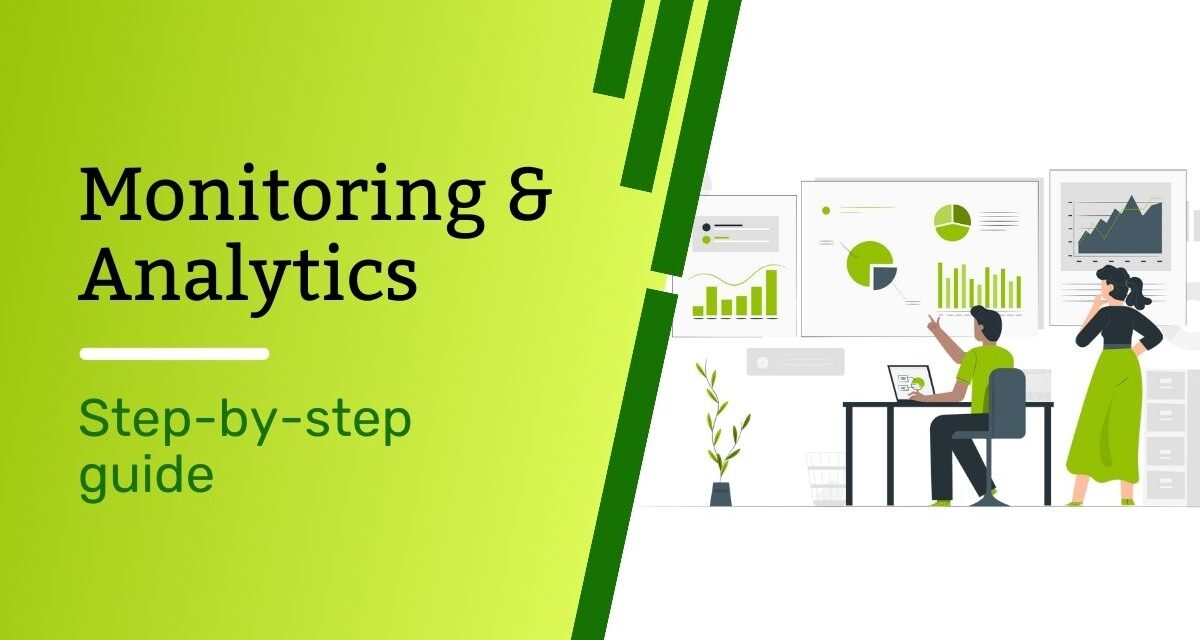In the digital age, data is king, and understanding it is paramount. Whether you’re a business owner seeking insights into your operations, a marketer aiming to enhance your campaigns, or simply curious about the world of monitoring and analytics, this step-by-step guide is here to make it all crystal clear.
Table of Contents
- Why Are Monitoring and Analytics Essential?
- Getting Started: Setting Up Your Analytics Tools
- Navigating the Analytics Dashboard
- Defining Your Objectives and Key Metrics
- Data Collection: What to Track and Why
- Interpreting Data: Turning Numbers into Insights
- Actionable Insights: Making Informed Decisions
- Real-time vs. Historical Data Analysis
- Optimizing for Mobile and Cross-Device Analytics
- A/B Testing: The Power of Experiments
- Data Visualization: Telling Stories with Data
- Privacy and Ethics in Analytics
- The Human Element: Soft Skills for Analytics
- Common Pitfalls to Avoid in Monitoring and Analytics
- Conclusion: Empowering Your Journey with Data
Now, let’s embark on a journey of data-driven discovery!
1. Why Are Monitoring and Analytics Essential?
Understanding the significance of monitoring and analytics is the first step. We’ll explore how these tools empower individuals and businesses to make informed decisions, improve strategies, and enhance user experiences.
2. Getting Started: Setting Up Your Analytics Tools
Let’s dive into the practical side of things. You’ll learn how to choose and set up analytics tools that suit your needs, whether it’s for a website, app, or business operations.
3. Navigating the Analytics Dashboard
Don’t be overwhelmed by the dashboard! We’ll guide you through the user interface, making it easy to grasp the various elements and metrics you’ll encounter.
4. Defining Your Objectives and Key Metrics
Identify what matters most to your goals. We’ll explain how to define clear objectives and select key performance indicators (KPIs) that align with your mission.
5. Data Collection: What to Track and Why
Not all data is equal. Learn what data to collect and why it’s relevant to your objectives. We’ll touch on the importance of data quality and accuracy.
6. Interpreting Data: Turning Numbers into Insights
Numbers can be daunting, but they hold valuable stories. We’ll teach you how to interpret data, uncover patterns, and extract actionable insights.
7. Actionable Insights: Making Informed Decisions
Analytics is more than just numbers; it’s about informed decision-making. Discover how to apply insights to improve performance and achieve your goals.
8. Real-time vs. Historical Data Analysis
Is real-time data analysis better than historical analysis? We’ll explore the pros and cons of both, helping you choose the right approach for your needs.
9. Optimizing for Mobile and Cross-Device Analytics
With the surge in mobile users, understanding mobile and cross-device analytics is crucial. We’ll discuss how to optimize for these platforms and gather valuable insights.
10. A/B Testing: The Power of Experiments
A/B testing is a game-changer for optimizing user experiences and campaigns. We’ll explain how to conduct effective experiments and analyze the results.
11. Data Visualization: Telling Stories with Data
Visuals are powerful communicators. Learn how to create compelling data visualizations that convey your insights effectively.
12. Privacy and Ethics in Analytics
As data handlers, it’s essential to prioritize privacy and ethical practices. We’ll explore the ethical considerations in monitoring and analytics.
13. The Human Element: Soft Skills for Analytics
Technical skills are vital, but soft skills like critical thinking and communication play a crucial role in making the most of analytics. We’ll show you how.
14. Common Pitfalls to Avoid in Monitoring and Analytics
Mistakes can be costly. We’ll highlight common pitfalls to steer clear of, from misinterpreting data to ignoring privacy concerns.
15. Conclusion: Empowering Your Journey with Data
In this comprehensive guide, we’ve journeyed from the basics of monitoring and analytics to advanced techniques. Whether you’re a beginner or a seasoned pro, the power of data is now at your fingertips.
FAQs
Q1: Do I need advanced math skills to excel in analytics?
A1: While math skills can be helpful, most analytics tools simplify the math. Focus on understanding the principles and applying them effectively.
Q2: What’s the best analytics tool for a small business with a limited budget?
A2: Google Analytics offers a free plan that’s suitable for many small businesses. It provides valuable insights without breaking the bank.
Q3: Can I use analytics for non-business purposes, like personal projects or hobbies?
A3: Absolutely! Analytics can enhance decision-making in various aspects of life, from personal projects to health and fitness goals.
Q4: How can I protect user privacy while collecting data for analytics?
A4: Implement data anonymization, disclosure of data practices, and opt-in/opt-out mechanisms to protect user privacy and comply with data protection laws.
Q5: What’s the most significant benefit of monitoring and analytics?
A5: The primary benefit is informed decision-making. Monitoring and analytics empower you to make data-driven choices, leading to improved results and experiences.
In conclusion, monitoring and analytics can be your compass in the digital world, guiding you toward data-driven decisions and success. Whether you’re analyzing website traffic, app performance, or customer behavior, this guide equips you with the skills and knowledge to harness the power of data. Dive in, explore, and empower your journey with insights.





